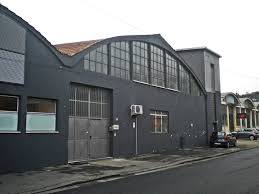A recent article in the New York Times summarised in very simple terms an issue which, at the moment, is not generating much debate: what role does ventilation of indoor environments play in the transmission of the virus?
As it says in the article, in 1974, in New York state, a girl who had contracted measles still went to school. Although 97 per cent of her schoolmates had been vaccinated, 28 nevertheless ended up catching the disease. The infected students were distributed across 14 different classes, but the girl, patient zero, only spent time with her own class. What caused this? A ventilation system operating in continuous recirculation mode which had not been adequately cleaned, and which extracted viral particles from her classroom and spread them via the ventilation system throughout the rest of the school.
And it’s not just measles. Other pathogens have proven their ability to exploit air duct systems to spread more widely. Legionella, for example, was discovered inside the ventilation system of a Philadelphia hotel in 1977, infecting 221 guests. For further information, refer to our article, or to historical information on the subject.
Consequently, it is well known how these systems, if not properly maintained, can give rise to the uncontrolled spread of micro-organisms or act as a breeding ground for those already found in the environment.
Considering the latest scientific evidence on Sars-Cov 2, i.e. that it is able to survive for at least 3 hours in the air, as well as on surfaces in indoor environments, and given what happened in Italian hospitals, where the contagion grew with a significantly greater multiplication rate than that recorded for example in Wuhan, the epicentre of the pandemic, it is also reasonable to suppose that HVAC systems are involved in the spread of this virus, too.
 So, what does this mean for those of us who are “closed” in confined environments, at home or still in the workplace? Some might ask themselves if they should escape to the country, as some people did during past epidemics. Nevertheless, as stated by the NYT article and other scientific literature, while dense urban conditions can help the spread of viral illnesses, buildings can also act as barriers against contamination, and this is a control strategy which is not obtaining the attention it deserves. This could be achieved by ensuring an efficient ventilation system, which is constantly cleaned and with all its components sanitised. Indeed, it has also been shown that keeping rooms properly ventilated, with the correct air change rates, helps dilute the concentrations of molecules already present, favouring the dispersion of pathogens.
So, what does this mean for those of us who are “closed” in confined environments, at home or still in the workplace? Some might ask themselves if they should escape to the country, as some people did during past epidemics. Nevertheless, as stated by the NYT article and other scientific literature, while dense urban conditions can help the spread of viral illnesses, buildings can also act as barriers against contamination, and this is a control strategy which is not obtaining the attention it deserves. This could be achieved by ensuring an efficient ventilation system, which is constantly cleaned and with all its components sanitised. Indeed, it has also been shown that keeping rooms properly ventilated, with the correct air change rates, helps dilute the concentrations of molecules already present, favouring the dispersion of pathogens.
In conclusion, if buildings* all had an efficient, treated, clean and sanitised ventilation system, we would have an additional weapon in the fight against the spread of the pathogen, rather than potential multipliers!
 The cleaning and disinfecting of ductwork must be carried out regularly, as already required by the regulations; but it takes on even greater relevance in these particular circumstances. Putting your trust in a company with proven experience and with certified tools and technology is also crucial to minimising the risk of transmission of coronavirus and other pathogens. For further information, get in touch via our website or by calling +39 0187 997592.
The cleaning and disinfecting of ductwork must be carried out regularly, as already required by the regulations; but it takes on even greater relevance in these particular circumstances. Putting your trust in a company with proven experience and with certified tools and technology is also crucial to minimising the risk of transmission of coronavirus and other pathogens. For further information, get in touch via our website or by calling +39 0187 997592.
*N.B. – When these systems are not present, forced ventilation is recommended, with frequent air changes. As a general rule, cleaning and sanitisation of the premises should always be performed with the goal of decontamination.



Leave A Comment
You must be logged in to post a comment